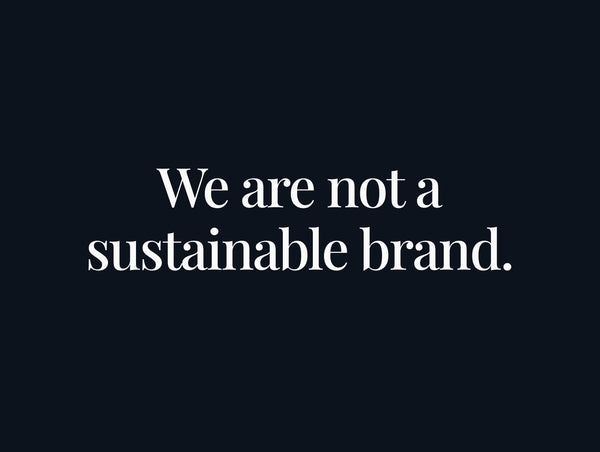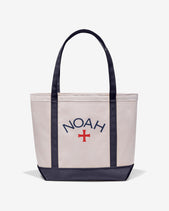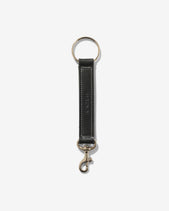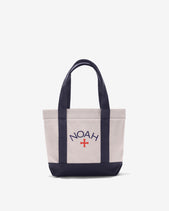
If you pay attention to the news, you know there’s a lot going on in the world. What you may not realize is how much that can affect the ways we do business and how it contributes to the final price you pay. It’s something we think about all the time - how to make a great product at a price that makes sense.
While we were thinking through how to explain some recent price changes (see Part One: Labor & Part Two: Fabric), we realized that many of you may have wondered why our prices are the way they are at all. So we thought - why not shed a little light on the most significant costs in making what we make - costs that are sometimes beyond our control?
There’s so much to talk about, we’re going to be spreading this out over several weeks. Below is one facet that we’re going to be diving into today - tariffs.

In a highly simplified way, the duty rate on something depends on two things: what it is, and where it’s coming from. A trade war happens when countries keep raising tariffs on each others’ goods and nobody backs down. Which is kind of where we are now.
This is one of those things you read in the news that sounds a world away, but it’s frightening for small brands like us. Tariffs are a meaningful part of the costs we take on to produce where we want to, and some of the increases being discussed would put us in a position to make hard decisions.
For instance - as we talked about a few weeks ago, our fleece and rugby shirts are made in Canada - a country our President tried to beef with last year. For decades we’ve operated under a free trade agreement we made with them and Mexico, which was called NAFTA. This was an agreement in which these three countries all agreed to lessen our tariffs on each other to help reduce the costs of things we make together, or import from one another.

For some reason, one of the first things our President decided to do was talk about torching NAFTA, with the promise to replace it with separate agreements with Canada and Mexico. When you’re watching from where we are, this uncertainty is super scary. NAFTA allows us to do great manufacturing in Canada, and was a big part of why making things there makes a ton of economic sense. Sweatshirts, rugby shirts and knit tops are a significant of our business, and any changes to our ability to work with Canadian factories could have forced us into making a tough decision about whether to raise prices or find different manufacturing partners that may not make as high quality a product.
It works the other way too. The tiff the US had with Europe last year resulted in a temporary 25% tariff on American-made blue jeans - if it stayed in place, it would have almost certainly impacted the price of our jeans at Dover Street Market in London.
If this sounds stressful to keep up with, believe us - it is. We have to plan these things months in advance, and when we see news that affects our ability to execute on those plans, it can make us feel sick to our stomach.
Signs are that our President has finally figured out that trade wars only hurt the companies and people he’s supposed to be looking out for, but it’s still something we keep an eye on.
We also want to circle back a bit to where we mentioned how tariffs can be an almost secret cost of our fabric choices. This relates to the aspect of tariffs that are dependent on what the item is. It’s really hard to describe the complexity of the tariff code. There’s literally 13,200 different categories covering everything imaginable you can import - from bees (free) to toilet seats (6.3%). There are a hundreds of categories for cotton alone, ranging from seeds to a variety of finished products - each with its own tax rate.

If we made everything out of cotton, that would be fine - most of it has a pretty reasonable tariff rate in the single digit percentage range. If you want an example of how big a difference material makes in tariff rates, you can look no further than our swim trunks.
We found an amazing nylon fabric supplier and manufacturer out of Italy to make swim trunks that we are extremely proud of. The downside is, nylon swim trunks imported to the United States are subject to 27.9% import duty - which makes them significantly more expensive for our customers then we would like them to be. As it stands now, that tariff ends up translating to an extra $15 of the $188 swim trunks.

The obvious question you might ask is - why don’t we simply make them somewhere else? Great question - making a good swim trunk is harder than you think. The fabric is slippery and difficult to sew, so you need very high-quality and experienced sewers working on them to get them right.
There are factories in the US that can do this level of sewing, but the reality is that they ask their clients to make minimum order sizes that don’t make any sense for us to do at our present size. And that leads us into our final installment in this series, which talks about economies of scale.
We hope this gives you insight into what it takes to do what we do, and helps answer some questions you may have around our pricing. As we conclude this series, we’ll talk about how the bigger we get, the more options that unlocks for us - including the possibility of lower prices.
One of our favorite things about the journey we’re on is the great response we’ve received from people who share our values. Thank you for reading this, and above all, thank you for paying attention.













